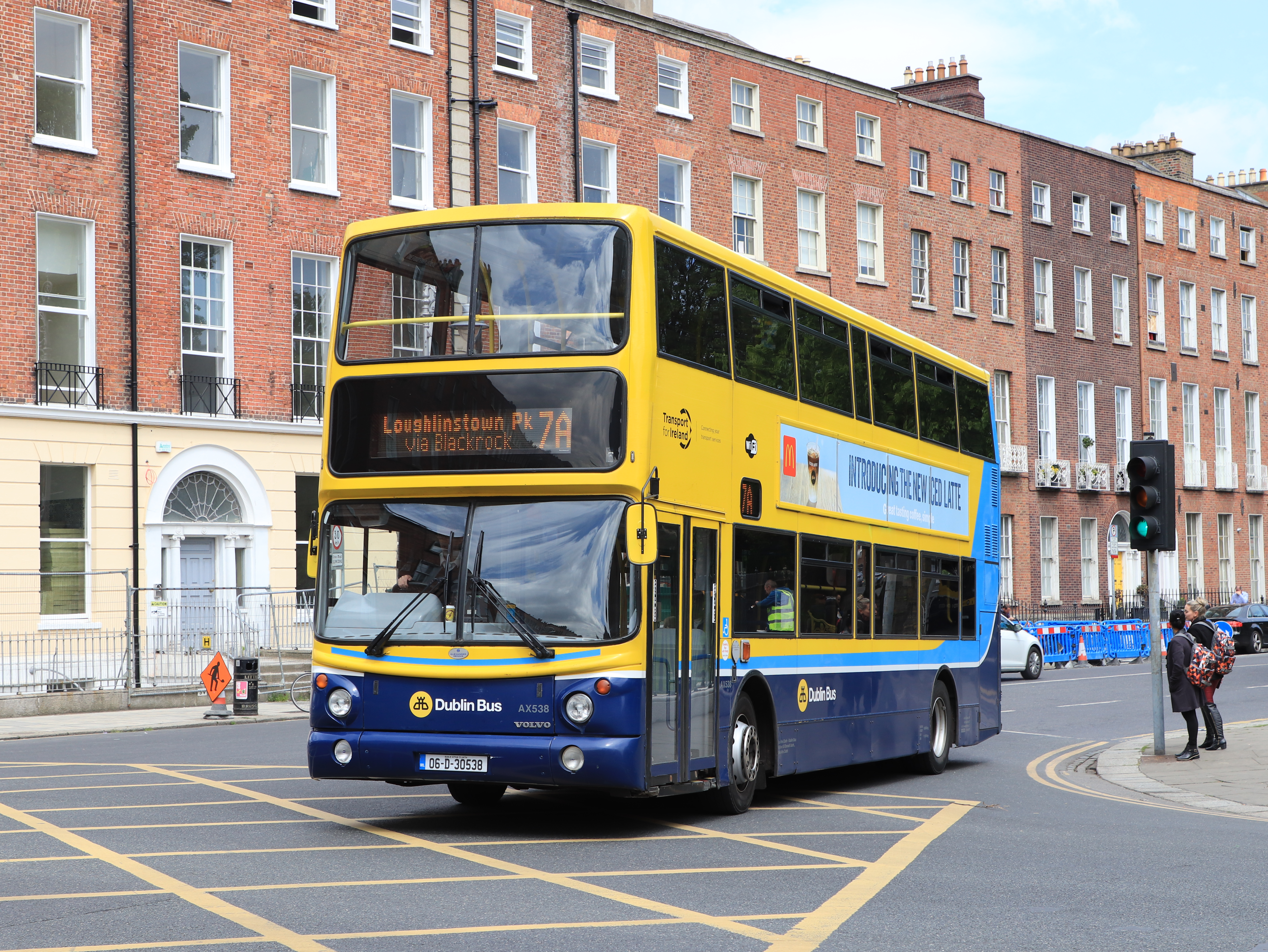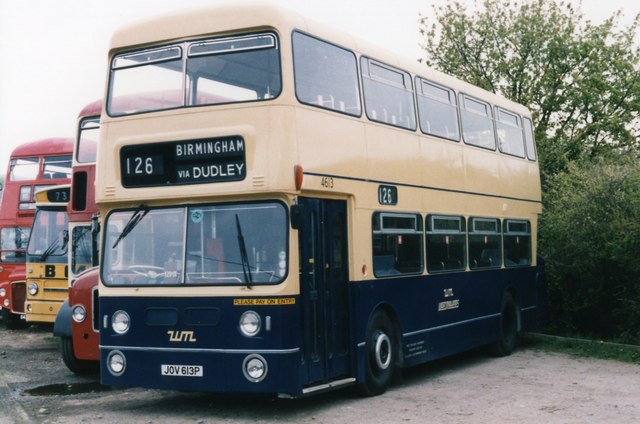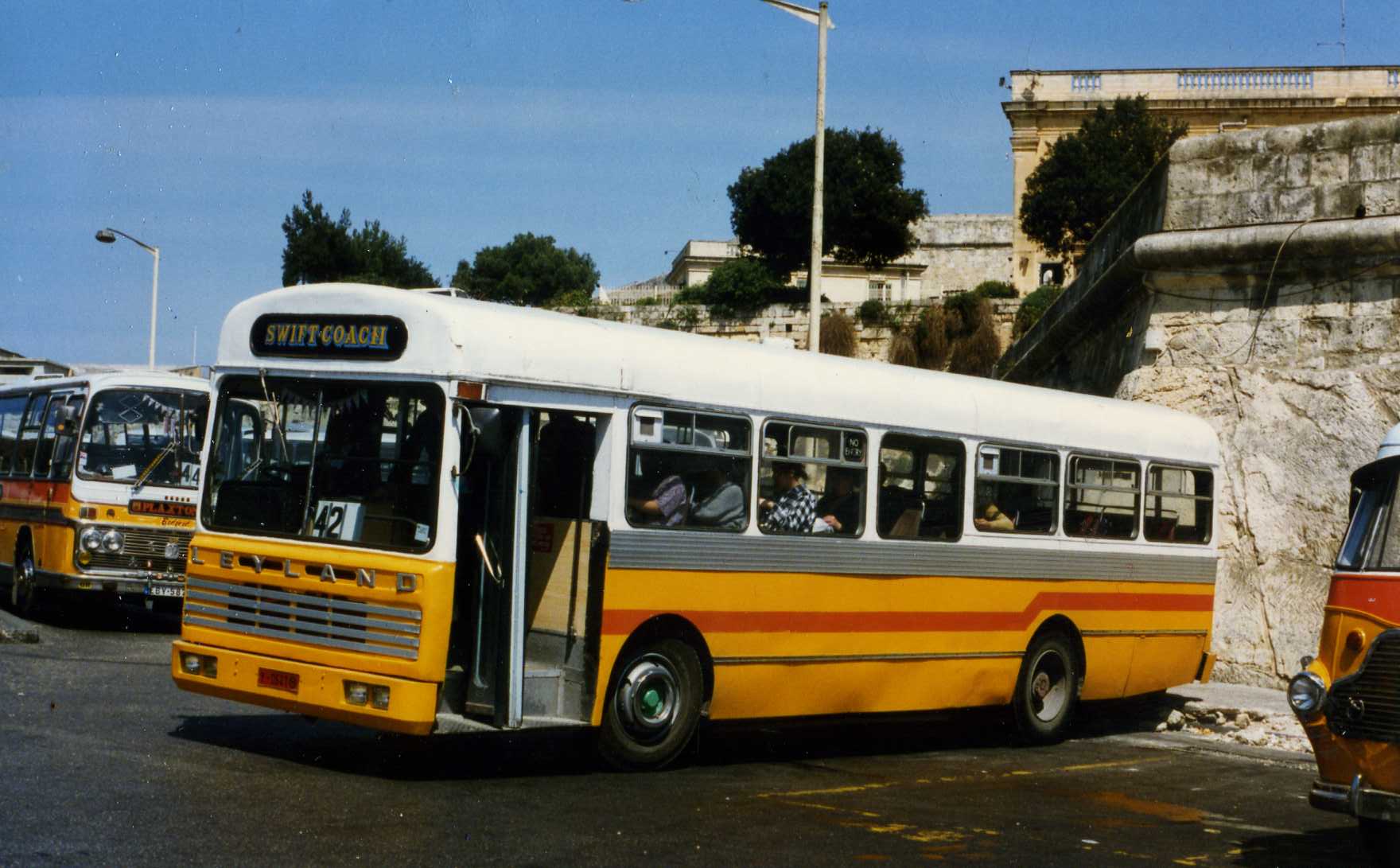|
London Buses Route 109
London Buses route 109 is a Transport for London contracted bus route in London, England. Running between Croydon and Brixton tube station, Brixton station, it is operated by Transport UK London Bus. History Route 109 commenced operating on 8 April 1951 as a circular Purley, London, Purley - West Croydon station - Streatham - Elephant & Castle - Victoria Embankment - Westminster - Kennington - Norbury - Croydon - Purley, London, Purley route operating in both directions. It replaced Trams in London, tram routes 16 and 18, operating from Arriva London#Brixton (BN), Brixton and Arriva London#Thornton Heath (TH), Thornton Heath garages with AEC Regent III RTs. From 16 October 1957 it ran between Purley High Street and Victoria Embankment. On 23 January 1966, the Sunday service was withdrawn with the exception of a few early morning journeys operated by Thornton Heath garage. On 31 October 1970, these journeys were converted to one-man operation (OMO) using single-deck AEC Swift ... [...More Info...] [...Related Items...] OR: [Wikipedia] [Google] [Baidu] |
Abellio London
Transport UK London Bus, formerly Abellio London, is a bus company operating services under contract to Transport for London in Greater London, England. History The origins of Transport UK London Bus can be traced back to June 1998, when National Express commenced operating routes London Buses route C1, C1 and London Buses route 211, 211 under the Travel London brand. In August 2000, National Express sold the business to Limebourne, who in July 2001 sold out to Connex Bus UK, Connex. In February 2004, National Express repurchased the business. Travel London operated contracts on behalf of Transport for London (TfL). On 21 May 2009, National Express sold Travel London to Abellio (transport company), Abellio. The sale included 36 TfL-tendered services. All vehicles, depots and staff were included. On 30 October 2009 the business was rebranded as Abellio London. Abellio London was included in the sale of Abellio's United Kingdom businesses to Transport UK Group in February 2023 ... [...More Info...] [...Related Items...] OR: [Wikipedia] [Google] [Baidu] |
Elephant & Castle
Elephant and Castle is an area of South London, England, in the London Borough of Southwark. The name also informally refers to much of Walworth and Newington, due to the proximity of the London Underground station of the same name. The name is derived from a local coaching inn. The major traffic junctions here are connected by a short road called Elephant and Castle, which is part of the A3. Traffic runs to and from Kent along the A2 ( New Kent Road and Old Kent Road), much of the south of England on the A3, to the West End via St George's Road, and to the City of London via London Road and Newington Causeway at the northern junction. Newington Butts and Walworth Road adjoin the southern junction. It forms part of the London Inner Ring Road and the boundary of the London congestion charge zone. The subterranean River Neckinger, which originates in Geraldine Mary Harmsworth Park, flows east under the area towards St Saviour's Dock where it enters the Thames. T ... [...More Info...] [...Related Items...] OR: [Wikipedia] [Google] [Baidu] |
VDL DB250
The VDL DB250 (originally the DAF DB250) is a twin-axle double-decker bus chassis manufactured by VDL Bus & Coach. DB250 The DAF DB250 was launched in October 1991 and originally only available with Optare Spectra bodywork with 260 built, mainly for operators in the United Kingdom.Optare Spectra Bus Lists on the Web 25 DAF DB250s with Optare Spectra bodywork were delivered to London Buses in 1992, with all but one delivered to the subsidiary with a single door arrangement; |
Alexander ALX400
The Alexander ALX400 (later known as the TransBus ALX400 and the Alexander Dennis ALX400) is a 2-axle double-decker bus body built by Walter Alexander Coachbuilders (later by TransBus International/ Alexander Dennis). It was one of the ALX-series bodywork, all of which (except the ALX100) featured the same designs on the front and rear panels that were originally designed for the new generation of mainly low-floor bus chassis produced since the late 1990s. Description First unveiled in 1997, the Alexander ALX400 replaced the step-entrance Alexander R-series and was fitted to numerous chassis, including the Dennis/TransBus Trident 2, the DAF/VDL DB250LF and the Volvo B7TL. Various seating configurations were available, with Transport for London (TfL) specification models fitted with a central exit door. There are typically 45 seats on the upper deck, and between 17 and 22 seats on the lower deck depending on chassis variant and length. Longer models for use elsewhere h ... [...More Info...] [...Related Items...] OR: [Wikipedia] [Google] [Baidu] |
Daimler Fleetline
The Daimler Fleetline (known as the Leyland Fleetline from circa 1975) is a rear-engined double-decker bus chassis which was built between 1960 and 1983. It was the second of three bus models to have a marque name as well as an alphanumeric identity code. The other two were the Freeline and the Roadliner. Design The Daimler Fleetline was the second rear-engined double-decker bus chassis to be launched by a UK manufacturer, following Leyland's introduction of the Atlantean in 1958. From the outset, the Fleetline had a drop-centre rear axle fitted as standard, enabling low-height bodywork to be fitted without necessitating an inconvenient seating layout in part of the upper deck, as was the case with early Atlanteans. Leyland responded by offering a drop-centre rear axle as an option on the Atlantean, but after the two companies came under the same ownership in 1968, the low-height Atlantean option was discontinued. The prototype Fleetline was fitted with a Daimler ... [...More Info...] [...Related Items...] OR: [Wikipedia] [Google] [Baidu] |
AEC Swift
The AEC Swift was a rear-engined step entrance single-decker bus chassis manufactured by AEC between 1964 and 1980. The chassis design was closely related to the Leyland Panther. It was available in and lengths, with an AEC AH505 or AH691 engine. The design was suitable for driver-only operation which helped bus operators to relieve the problems of labour shortages and high costs, and became one of the alternatives to the British double-decker buses which could only be operated by a driver and conductor, such as the London AEC Routemaster or Bristol Lodekka, as British legislation prevented driver-only operation of double-decker buses until the late 1960s. London The largest fleet was operated by London Transport and London Country Bus Services, with over 1,500 in total delivered between 1966 and 1972. Bodywork was supplied by Strachans Coachwork (prototypes only), Park Royal Vehicles, Metro Cammell Weymann and Marshall, to basically the same design. The fleet w ... [...More Info...] [...Related Items...] OR: [Wikipedia] [Google] [Baidu] |
One-man Operation
One-person operation (OPO), also known as driver-only operation (DOO), one-man operation (OMO), single person train operation (SPTO), or one-person train operation (OPTO), similarly to driver-controlled operation, is operation of a train, bus, or tram by the driver alone, without a conductor. On one-person operated passenger trains, the engineer must be able to see the whole train to make sure that all the doors are safe for departure. On curved platforms a CCTV system, mirror or station dispatch staff are required. Although extra infrastructure such as cameras and mirrors might require additional investment, one-person operation is usually faster and cheaper to implement than automatic train operation, requiring a smaller investment in, for example, platform intruder detection systems and track protection (fencing, bridge-caging, CCTV etc.). In some cases, one-person operation can be seen as an intermediate step towards automatic train operation. While European freight t ... [...More Info...] [...Related Items...] OR: [Wikipedia] [Google] [Baidu] |
Railway Gazette International
''Railway Gazette International'' is a British monthly business magazine and news website covering the railway, metro, light rail and tram industries worldwide. Available by annual subscription, the magazine is read in over 140 countries by transport professionals and decision makers, railway managers, engineers, consultants and suppliers to the rail industry. A mix of technical, commercial and geographical feature articles, plus the regular monthly news pages, cover developments in all aspects of the rail industry, including infrastructure, operations, rolling stock and signalling. History ''Railway Gazette International'' traces its history to May 1835 as ''The Railway Magazine'', when it was founded by Effingham Wilson. The ''Railway Gazette'' title dates from July 1905, created to cover railway commercial and financial affairs. In April 1914, it merged with ''The Railway Times'', which incorporated '' Herapath's Railway Journal'', and in February 1935 it absorbed the ''Railw ... [...More Info...] [...Related Items...] OR: [Wikipedia] [Google] [Baidu] |
Pen And Sword Books
Pen and Sword Books, also stylised as Pen & Sword, is a British publisher which specialises in printing and distributing books in both hardback and softback on military history, militaria and other niche subjects, primarily focused on the United Kingdom. Pen and Sword has over 6,000 titles available in print, and also available as ebook download. Releasing 500 new titles each year on a variety of subjects, it is part of the '' Barnsley Chronicle'' newspaper group. History The first books produced by the company were in response to public demand, following a series of articles first published weekly in the '' Barnsley Chronicle''. ''Dark Peak Aircraft Wrecks'' told the story of crash sites in the Dark Peak area of the Peak District National Park, and a further weekly feature on the history of two Kitchener battalions, known as the Barnsley Pals, aroused a public interest. Over the years these books have been reprinted a number of times. Following on from the success of t ... [...More Info...] [...Related Items...] OR: [Wikipedia] [Google] [Baidu] |
AEC Regent III RT
The AEC Regent III RT was one of the variants of the AEC Regent III. It was a double-decker bus produced jointly between AEC and London Transport. It was the standard red London bus in the 1950s and continued to outnumber the better-known Routemaster throughout the 1960s. Prototype The prototype (London Transport RT 1) was built in 1938 with an AEC engine (a stopgap measure until the new was available) and air-operated pre-selective gearbox. Finding a satisfactory British substitute for the German air compressor, bought from Bosch, was to cause problems for AEC once war broke out. A prototype chassis was placed into service, disguised as an old vehicle. It carried a secondhand open-staircase body previously carried on Leyland Titan (fleet number TD 111), dating from 1931. Thus bodied, RT 1 entered service in July 1938 as ST 1140, even though it was nothing like a standard ST vehicle. It continued in service until December 1938. While the ch ... [...More Info...] [...Related Items...] OR: [Wikipedia] [Google] [Baidu] |
Arriva London
Arriva London is a bus operator operating primarily in Greater London and partially in Essex, Hertfordshire, Kent and Surrey. It is a subsidiary of Arriva UK Bus and operates services for London Buses under contract to Transport for London. Operations are split between two registered companies, Arriva London North Limited and Arriva London South Limited. History The origins of Arriva London can be traced back to 1980 when the Arriva, Cowie Group purchased the Grey-Green coach business in London. On February 1987, Grey-Green commenced operating bus routes in north and east London under contract to London Regional Transport (LRT). On 1 April 1989, London Buses was divided into 11 separate Privatisation of London bus services#Break-up of London Buses, business units, two of which were Leaside Buses and South London Transport. As part of the privatisation of London bus services, the Cowie Group purchased these business units in September 1994 and January 1995 for £25.5 mi ... [...More Info...] [...Related Items...] OR: [Wikipedia] [Google] [Baidu] |
Trams In London
{"type":"FeatureCollection","properties":{"name":"Trams in London","created":"2012-04-21T00:56:34.661+02:00","modified":"2018-04-16T22:45:37.383+02:00","generated":"2019-03-30T15:47:12.111+01:00","version":-1,"metadata":""},"features":[{"type":"Feature","properties":{"id":"a_703654902_4","path":"/LCC","name":"Line a_703654902_4","stroke":"#9900ff","stroke-opacity":1,"stroke-width":3},"geometry":{"type":"LineString","coordinates":-0.208302,51.421946],[-0.207594,51.421337],[-0.207068,51.421014],[-0.205662,51.420679],[-0.204643,51.420091],[-0.201339,51.419422],[-0.200073,51.419154],[-0.198657,51.419074],[-0.196393,51.419248],[-0.194111,51.419534], 0.19252,51.417615 0.192434,51.415568 0.189773,51.415675 0.187263,51.415875 0.182266,51.416162 0.179262,51.416964 0.173596,51.422924 0.170335,51.425306 0.168019,51.42799 0.164514,51.431442 0.163077,51.433475 0.157927,51.436873 0.152906,51.443347 0.151288,51.445228 0.149657,51.446271 0.148412,51.447796 0.147769,51.450979 0.147425,51.453011 0 ... [...More Info...] [...Related Items...] OR: [Wikipedia] [Google] [Baidu] |








